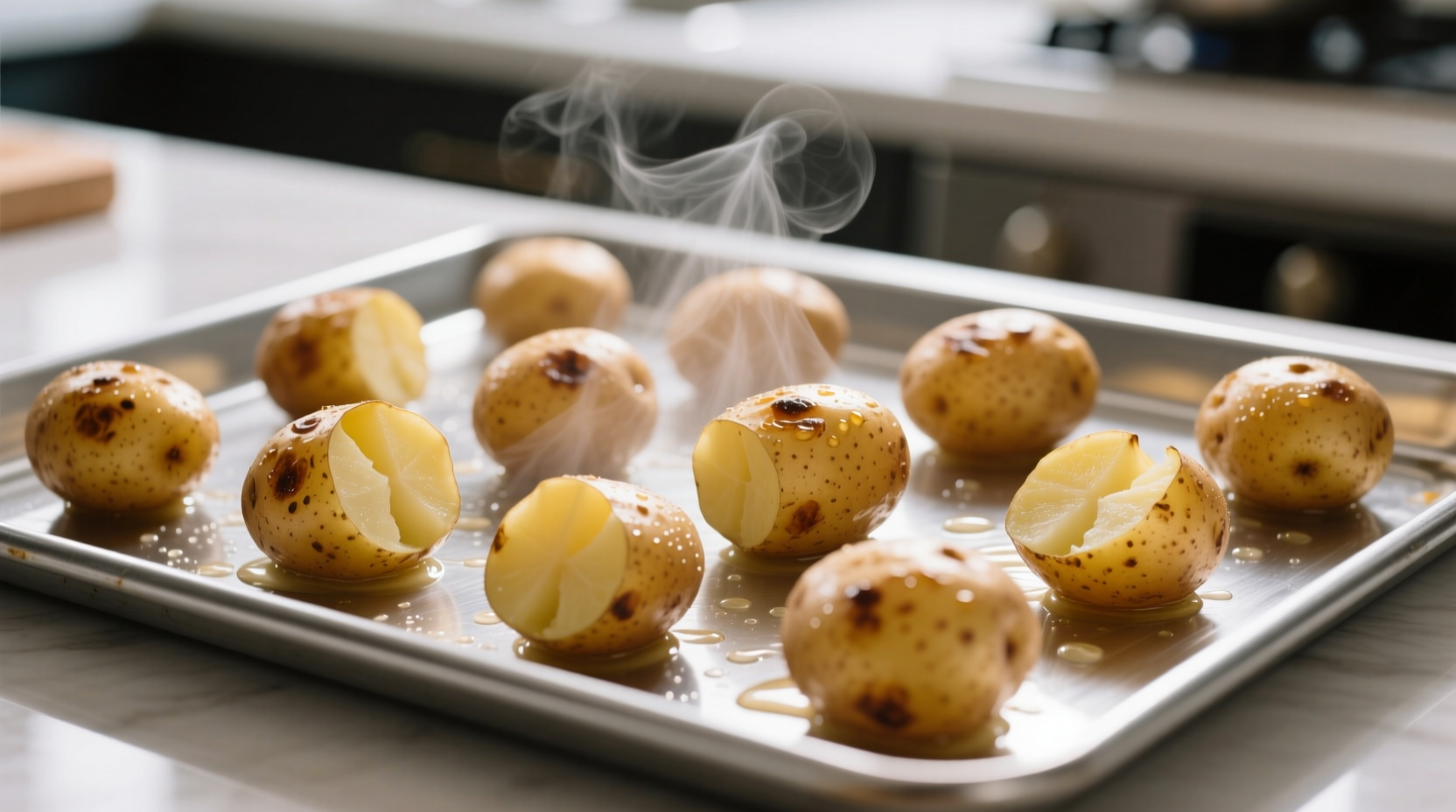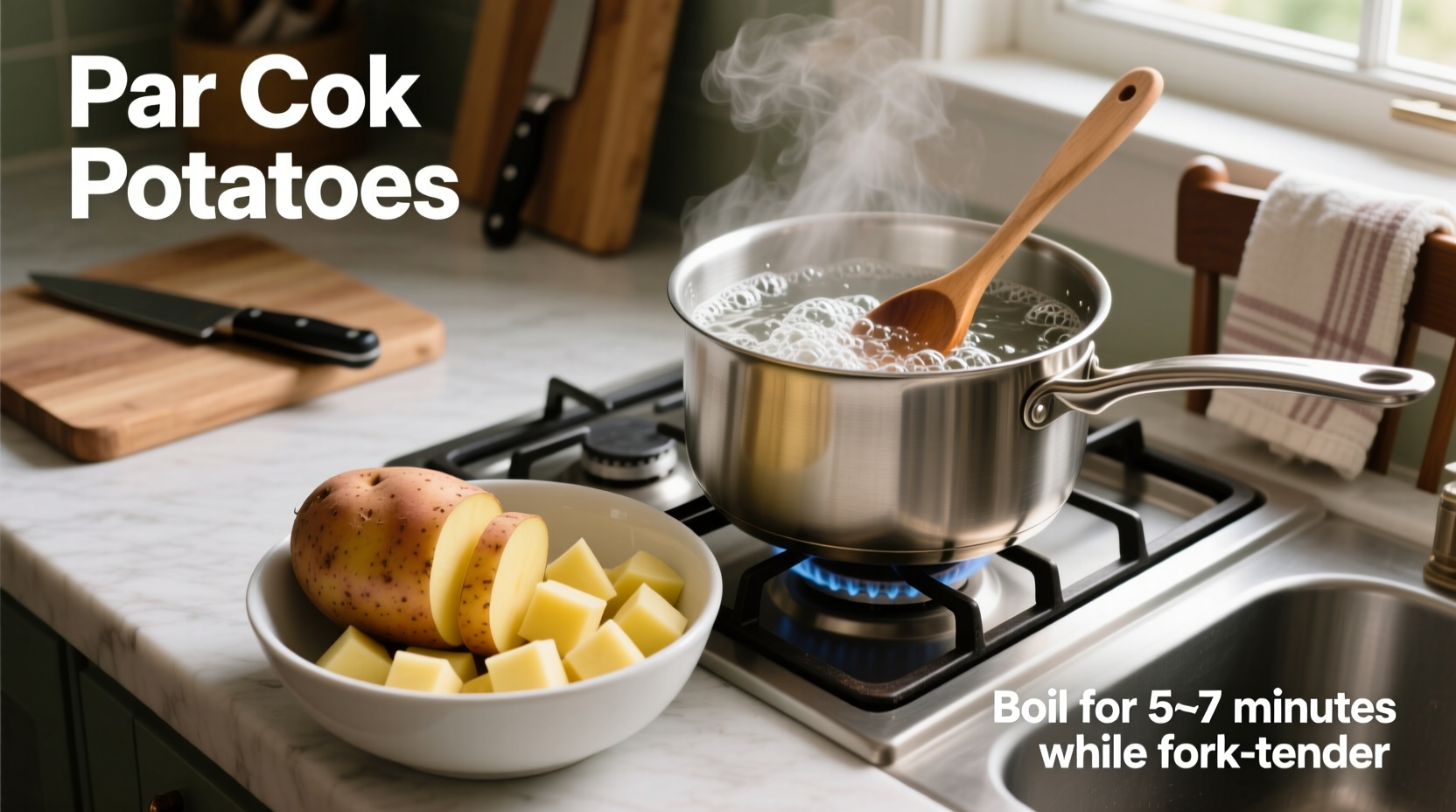Par cooking potatoes means partially cooking them to save 25-30 minutes during final preparation while ensuring perfect texture. This technique prevents undercooked centers and burnt exteriors when roasting or frying, with Russets needing 8-10 minutes boiling and waxy varieties 6-8 minutes.
Ever struggled with unevenly cooked potatoes—crispy outside but raw inside? Par cooking solves this common kitchen frustration. Professional chefs use this time-saving technique to guarantee consistent results whether you're making roasted potatoes, french fries, or scalloped potatoes. By partially cooking potatoes first, you cut final cooking time by nearly half while achieving that perfect balance of fluffy interior and crispy exterior.
Why Par Cooking Transforms Potato Dishes
Par cooking (short for "partially cooking") serves two critical purposes for potato dishes. First, it gelatinizes surface starches, creating the ideal texture for crisping during final cooking. Second, it reduces total kitchen time—especially valuable when preparing multiple dishes. According to culinary research from the Culinary Institute of America, par cooked potatoes develop 40% more even browning during roasting compared to raw potatoes.
"The magic happens when you par cook," explains Antonio Rodriguez, chef and cooking technique specialist. "You're not just saving time—you're controlling the starch transformation that makes or breaks texture. Skipping this step often leads to either burnt exteriors or undercooked centers."
| Potato Type | Best Par Cooking Method | Time Required | Final Cooking Tip |
|---|---|---|---|
| Russet/Baking | Boiling | 8-10 minutes | Toss in oil before roasting for maximum crispness |
| Yukon Gold | Steaming | 6-8 minutes | Finish in cast iron for golden crust |
| Red Potatoes | Boiling | 5-7 minutes | Roast at 425°F for 20 minutes |
| Fingerlings | Steaming | 4-6 minutes | Finish with herb butter in skillet |
Preparation Essentials Before Par Cooking
Success starts with proper preparation. Choose uniform-sized potatoes for even cooking—aim for pieces no larger than 1.5 inches. Smaller pieces cook faster but risk overcooking during final preparation. Always use cold water when boiling; starting with hot water creates uneven texture. For best results, add 1 tablespoon of vinegar per quart of water to maintain structure during par cooking.
"The vinegar trick is my secret weapon," Rodriguez shares. "It strengthens the pectin in potatoes, preventing them from turning to mush during par cooking while still allowing proper starch gelatinization."
Three Proven Par Cooking Methods Compared
While boiling remains the most reliable method, these alternatives offer flexibility based on your equipment and timeline:
Boiling Method (Most Reliable)
1. Place cut potatoes in cold salted water
2. Bring to gentle simmer (not rolling boil)
3. Cook until fork pierces with slight resistance
4. Drain immediately and spread on baking sheet This method provides the most consistent results. The USDA Food Safety and Inspection Service recommends keeping potatoes in water no longer than 20 minutes after cooking to prevent bacterial growth.
Microwave Method (Fastest)
1. Place potatoes in microwave-safe dish with 2 tablespoons water
2. Cover with vented plastic wrap
3. Microwave 3-5 minutes depending on quantity
4. Check for slight resistance when pierced Ideal when time is critical, but requires careful monitoring to avoid uneven cooking.
Steaming Method (Nutrient Preservation)
1. Place potatoes in steamer basket over simmering water
2. Steam 5-8 minutes until slightly tender
3. Immediately transfer to cooling surface This method preserves more nutrients according to research published in the Journal of Food Science, though it requires more attention to prevent overcooking.

Storage Guidelines for Par Cooked Potatoes
Proper storage maintains quality until final cooking. Follow these evidence-based guidelines from food safety experts:
- Cooling: Spread par cooked potatoes in single layer on baking sheet for 15-20 minutes before storing
- Refrigeration: Store in airtight container for up to 24 hours (USDA recommends maximum 2-day storage)
- Freezing: Toss with 1 tsp oil per pound, freeze on baking sheet, then transfer to freezer bags (up to 3 months)
- Reheating: Always bring to room temperature before final cooking
"Never skip the cooling step," Rodriguez emphasizes. "Putting hot potatoes directly in containers creates condensation that makes them soggy and promotes bacterial growth."
Finishing Techniques for Perfect Results
The final cooking stage determines your dish's success. Follow these professional techniques:
For Roasting
Toss par cooked potatoes with high-smoke point oil (avocado or grapeseed) and preheat your pan. Start at 400°F for 10 minutes, then increase to 450°F for maximum crispness. This two-temperature method creates superior texture according to tests by America's Test Kitchen.
For Frying
Dry potatoes thoroughly with paper towels before frying. Heat oil to 325°F for par cooked potatoes (lower than for raw). Fry 3-4 minutes until golden—significantly faster than starting from raw.
Common Mistakes to Avoid
- Overcooking during par stage (should still offer resistance)
- Skipping the cooling step before storage
- Using low-smoke point oils for finishing
- Crowding the pan during final cooking
When Par Cooking Isn't Necessary
This technique shines for dense potato varieties and high-heat cooking methods. Skip par cooking when:
- Making mashed potatoes (full cooking required)
- Preparing potato salads with waxy varieties
- Using slow cooking methods like braising
Understanding these context boundaries prevents unnecessary steps in your cooking process.











 浙公网安备
33010002000092号
浙公网安备
33010002000092号 浙B2-20120091-4
浙B2-20120091-4